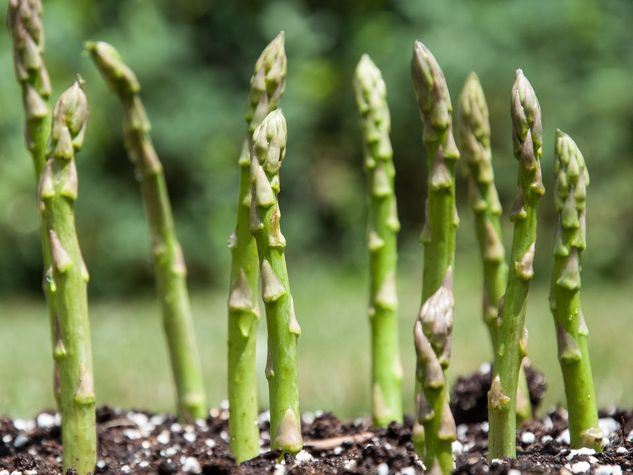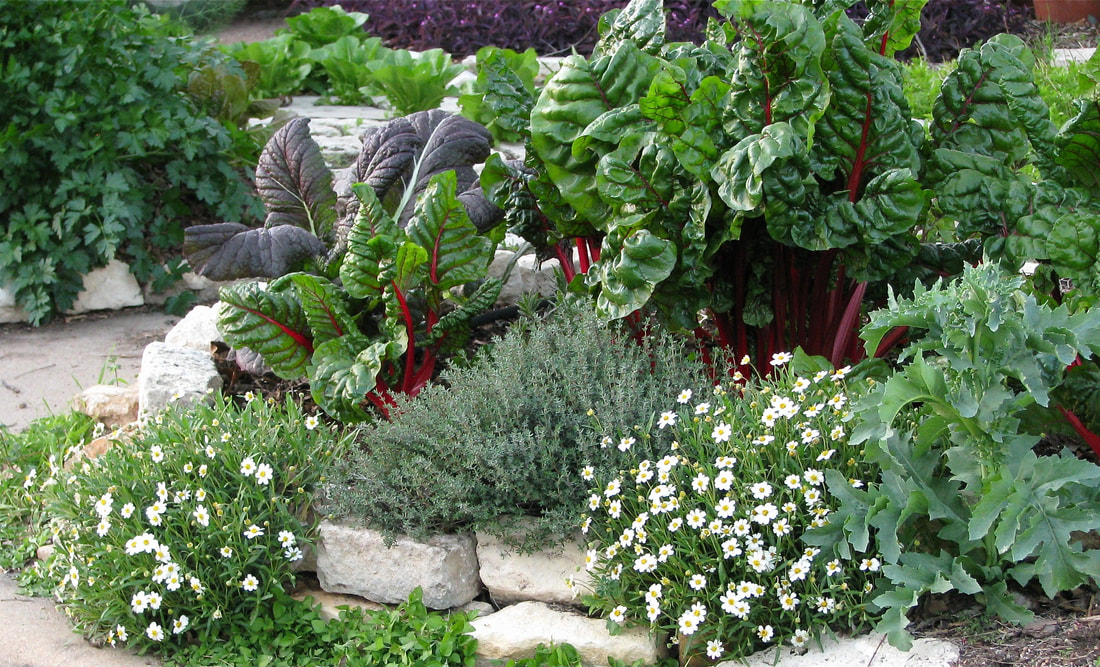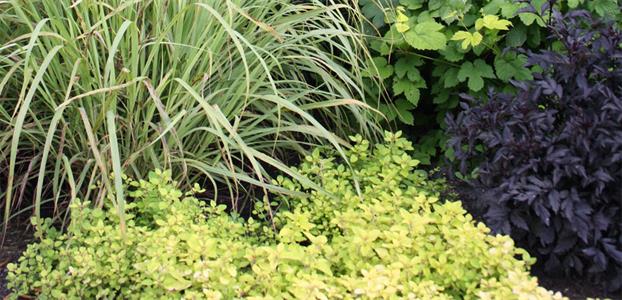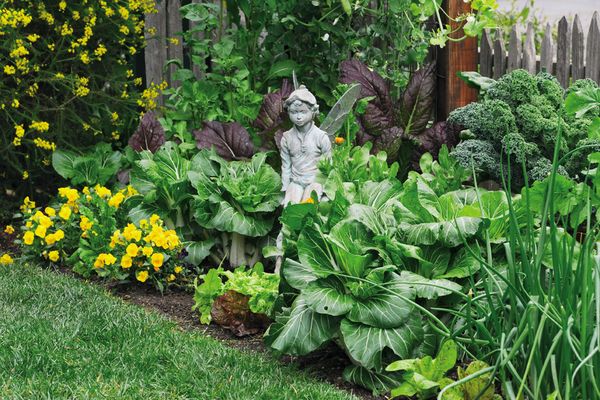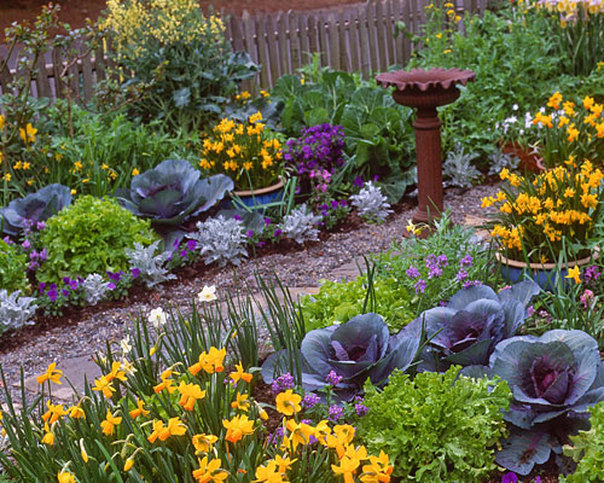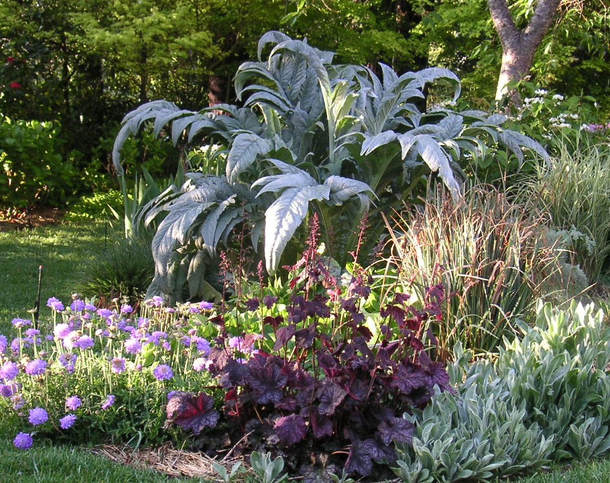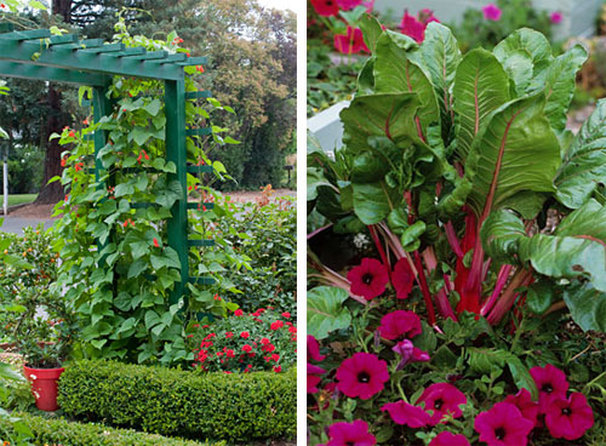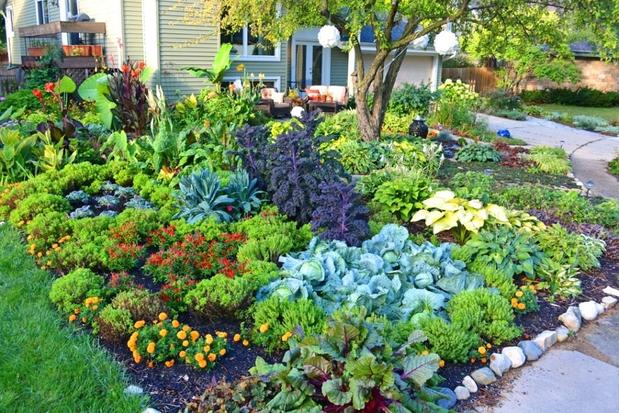|
4/26/2018 0 Comments Grow Your Own AsparagusAsparagus is one of the first vegetables in spring to grace our kitchen tables. An asparagus patch can be productive for 15 years or more if well-tended so why not plant your own bed of this delightful edible.
You will need: * asparagus crowns (males are preferred) * sunny spot * composted manure * shovel Asparagus is usually planted by crowns from mid-April to late May after the soil has warmed up to about 50 degrees. Male varieties like 'Jersey Knight' are better producers because they expend all their energy into producing a tender, abundant crop instead of producing seed. Choose a sunny spot with well-drained soil on the north or west side of the garden where it can remain undisturbed. Dig a furrow about 6-8 inches deep and 12 inches wide. Add a layer of composted cow manure for a slow-release fertilizer. Place the crowns 1 ½ feet apart in the furrow on top of the manure. Rows should be spaced five feet apart to promote air circulation which will help prevent the spread of fungal diseases. Cover crowns with two inches of soil, gradually adding more soil through the growing season until the furrow has been filled. Spears should emerge within one week in moist soils. Asparagus should not be harvested the first year and sparingly the second year. Let the spears develop into ferns which will help produce food for next year’s crop. The ferny foliage also has ornamental value and looks attractive when interplanted with the bright colors of zinnias or the soft pastels of cosmos. RECIPE FOR CREAMY ASPARAGUS 2 c. water 2 lbs. asparagus 1/2 c. chopped onion 2 T. flour 2 T. butter 1 tsp. garlic powder 1 tsp. lemon pepper 1/2 tsp. salt 1 c. chicken broth 1/4 c. parsley 2 T. vinegar 1 tsp. dill 8 oz. sour cream Cook asparagus; saute onion and butter. Add next 4 ingredients. Gradually add broth. Add parsley, vinegar, and dill. Bring to a boil for 2 minutes. Reduce heat and whisk in sour cream. Serve at room temperature. ASPARAGUS WITH PENNE & TOMATOES 5 garlic cloves, minced 1 pt. cherry tomatoes Salt to taste ¼ cup olive oil 1 T. fresh oregano, chopped ¼ c. shredded parmesan cheese 1 tablespoon butter ¼ tsp. red pepper flakes ½ lb. penne pasta, cooked, drained 1 pound fresh asparagus In a skillet, sauté garlic in oil and butter for 2-3 minutes. Cut asparagus into 1 ½ -inch lengths and cook in skillet for 5 minutes. Add cherry tomatoes, oregano, red pepper flakes, and salt; cook until heated through. Add parmesan cheese and mix well. Pour over hot pasta and toss to coat. Serve immediately. Serves 4.
0 Comments
4/17/2018 2 Comments The Ornamental EdibleGrowing your own food has taken on a new dimension. Tomatoes, squash, and Swiss chard are all making their way into the landscape. Perhaps you don't have room or time for a full-out vegetable garden. Maybe you only want to grow one tomato plant and some kale, or the only sunny spot might be in the front yard. It's time to think outside the box, or in this case, outside the garden, and consider edible landscaping. * The foliage of many edible plants are very attractive and offer interesting texture and color when planted among perennials, trees, and shrubs. In the photo above, the broad colorful leaves of Swiss chard, Japanese mustard, and artichoke add interest when mixed with thyme and rock garden plants. Above: A trio of edibles with chartreuse foliage make a lovely contrast with the burgundy leaves of Astilbe. Above: Create a border of edible collard greens, Japanese mustard, onion, and broccoli. Add in flowers and pockets of salad greens. The fairy statue gives the bed an ornamental, whimsical touch. Above: The blue-gray leaves of cabbage plants mingle nicely with daffodils, dusty miller, pansies, and lettuce. Above: Think of ways to introduce edible plants into your existing landscapes: The lavender-colored Scabiosa could easily be replaced with chives; the dark leaf Coral bells could be substituted with ruby lettuce; plant garden sage instead of dusty miller, and lemon grass in place of ornamental grass. Above right: The red stems of Swiss chard are striking with a red petunia in a container. Above left: Plant an edible vine to scramble up an arbor. Scarlet runner bean is a great option and grows quickly. Above: This vine is truly edible: it's Malabar spinach! The stems are a deep purple and thick leaves are tasty in a salad. Above: A final source of inspiration is this quilt-like planting that includes cabbage, several kale, and Swiss chard along with marigolds, hostas and tropical plants. * It's a new growing season, and a new way of looking at the food you grow, so think outside the box - oops - garden. Plant the carrots next to the daisies, peas with the pansies, and tomatoes with the cosmos. They'll all be happier growing as companions in the garden, and they make an pretty, interesting landscape, too. * 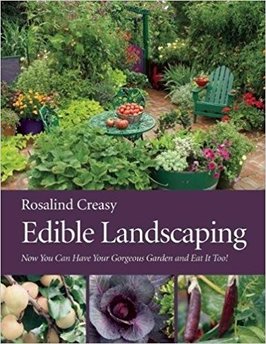 Recommended Reading: Edible Landscaping by Rosalind Creasy. She's the authority on the subject and we have her book here at BGC! It is so inspiring. Seriously. It'll make you rethink how you landscape and soon you'll be growing pole beans in place of clematis and tucking salad greens in with your perennials. All photos are from rosalindcreasy.com or pinterest.com.
|
|
|
STORE INFO
5205 Mormon Road Burlington, WI 53105 262.763.2153 |

